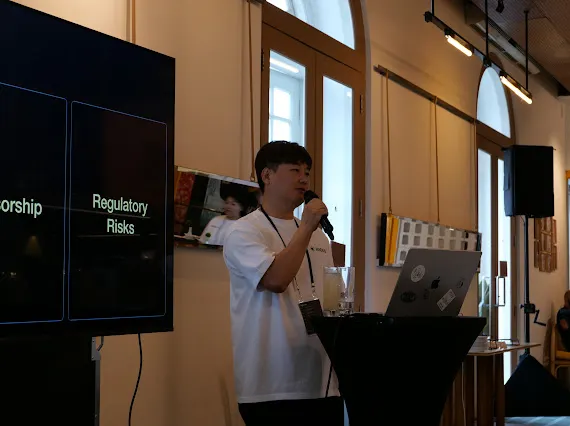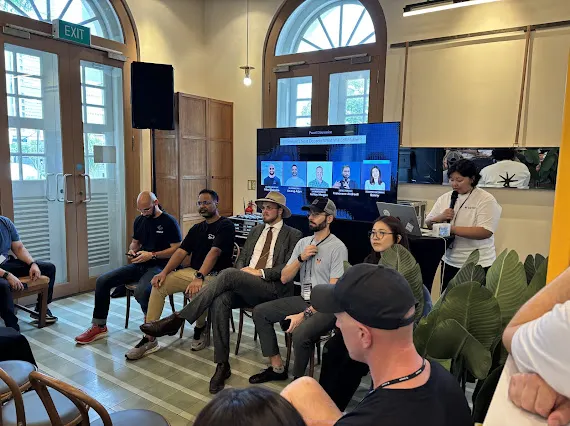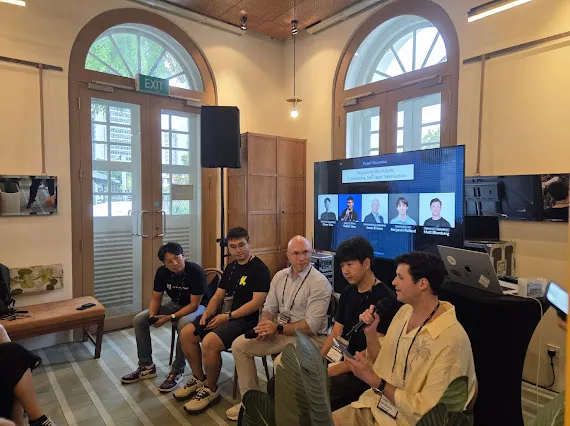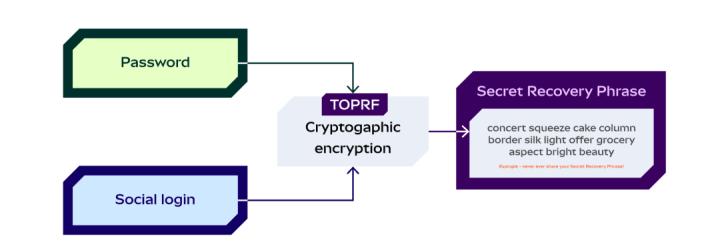Source:Radius
Big financial institutions are starting to move onchain, but is Ethereum ready to meet the scale and regulatory demands of global finance?
Radius: Trust, Transparency, and the Next Era of Ethereum
Big banks, asset managers, and TradFi’s most influential players are now relying on blockchain to power everything from stablecoins to RWAs and global payments.
But is Ethereum truly ready to shoulder the demands of institutional finance, or are we still building toward that vision?
We gathered leading institutions and infrastructure teams at “Ethereum Forward: Institutions Meet DeFi & L2s” during Token2049 Singapore to surface real challenges and capture a genuine snapshot of how Ethereum is evolving for enterprise adoption.
Special thanks to our co-host Google Cloud, media partner Followin, speakers, and attendees who helped make this conversation possible.
Here’s what we learned from the conversations shaping Ethereum’s next chapter. Dive into the full recap below.
Radius: Trust, Transparency, and the Next Era of Ethereum

Speaker: Jayden Kim (Co-founder & COO, Radius)
Recording: YouTube
If Ethereum is to anchor the next era of global finance, trust must be at its core.
Right now, key challenges stem from L2s relying on single sequencers, leaving them exposed to MEV manipulation, censorship risks, and regulatory pressure. Fragmented rollups also create isolated liquidity silos, hindering user experience and slowing broader adoption. On top of that, regulatory standards around KYC, anti-money laundering (AML), and custody continue to define what’s needed for Ethereum to serve as a credible foundation for global finance.
Radius’s answer is an open, transparent infrastructure.
Radius combines decentralized sequencing (via distributed operators), cross-rollup messaging and liquidity bridges, and transparent transaction ordering that reduces unfair trading advantages. Together, these elements build the foundation for a fairer, more transparent Ethereum ecosystem.
Ondo Finance: Intersection of RWAs & DeFi

Speaker: Matt Blumberg (Head of DeFi, Ondo Finance)
Recording: YouTube
Tokenized RWAs are the next frontier, but current DeFi liquidity models don’t fit their needs.
The solution lies in unlocking capital efficiency through deeper integration with TradFi markets. AMMs were built for crypto assets, not tokenized equities. Shallow liquidity, high capital costs, and impermanent loss make them ill-suited for low-volatility, price-sensitive assets. Central Limit Order Books (CLOBs) may be familiar to TradFi, but their fully funded order requirements lead to inefficient capital lockups.
Ondo’s Solution: Instant Mint/Redeem
Ondo removes these barriers by connecting directly to TradFi liquidity. If a user wants to buy tokenized Apple stock in USDC, Ondo quotes a live TradFi price, instantly mints a 1:1-backed token, and delivers the asset: achieving deeper liquidity and lower costs without pooled capital or funded order books. While some centralization remains necessary for compliance and capital efficiency, instant minting and redemption are to become an industry standard.
Advice for DeFi Builders: Make TradFi integration your foundation. Build seamless interfaces for complex interactions. Avoid exclusive partnerships that limit future integration flexibility. And always design for adaptability—especially as lending, perps/options, and cross-chain execution evolve.
Panel 1: Ethereum’s Next Decade: What Will Still Matter?

Panelists: Francesco Andreolí (Head of DevRel, Consensys/MetaMask), Ashley Morgan(Head of Stablecoins and RWA, Ethereum Foundation), Anurag Arjun (Co-Founder, Avail), Mike Silagadze (Founder & CEO, EtherFi)
Moderator: Sonny (BD, Radius)
Recording: YouTube
This session explored how Ethereum is solidifying its reputation as the institutional blockchain of choice, and where it still needs to evolve.
Today, Ethereum stands out for institutional trust, its deep developer community, advanced tooling, and its EVM environment. The L1/L2 design provides enterprises with both security and scalability—L1 for asset storage and settlement layer, L2s for faster, cheaper transactions. With stablecoins and RWAs on the rise, Ethereum continues to cement its position as the preferred platform for regulated finance.
But nobody sidestepped the realities for what next.
As the ecosystem matures, challenges remain: the lure of high TPS at the cost of security, liquidity fragmentation across isolated rollups, and the ongoing need to attract more web2 talent. But at its core, Ethereum’s long-term credibility will depend on maintaining its security-first ethos while improving interoperability and user experience for all.
Panel 2: Regulating the Future: Stablecoins, DeFi, and Tokenization

Panelists: Glenn Woo (Head of APAC, BlockDaemon), Daniel Oon (Head of BD, Katana), Jason French (Executive Director, Clients, Sygnum Bank), Jay (Research, CAP)
Moderator: Matt Blumberg (Head of DeFi, Ondo Finance)Recording: YouTube
As regulated institutions enter the space, compliance and infrastructure standards are quickly rising.
The panel unpacked what institutional onboarding really entails: strict audits, segregation of duties, and transparency at every step. Service providers must now prove operational rigor and trustworthiness by design. For stablecoins, both retail and institutional users demand clear reserve backing, legal protections, and seamless interoperability. With a surge in new issuers, cross-chain mobility and strong regulatory risk management—especially for yield-bearing assets—are becoming top priorities.
Panelists also confronted the real-world risks.
Market volatility, operational hiccups, and technical vulnerabilities persist even in mature systems. True resilience requires clear rules, rigorous audits, and overcollateralization; not blind optimism. The projects that win institutional trust will be those that embed regulatory alignment, transparency, and interoperability into their core. In this new era, credibility is earned when compliance is the default, not the exception.
Panel 3: The Institutional Friendly Layer: L1 vs L2?

Panelists: Mo Jalil (APAC Enterprise Lead, EF), Omar Azhar (VP of Business Development, ZK Sync), Mark Tyneway (Co-Founder, Optimism)
Moderator: Sunshine Kim (Head of Product, Radius)Recording: YouTube
Institutional-grade infrastructure is defined by outcomes: performance, compliance, privacy, and operational clarity.
Consensus across the panel was that institutions rely on Ethereum’s secure, neutral L1 for global settlement, while leveraging L2s for customized execution, privacy, and compliance. Open, composable networks continue to outperform closed or consortium-based approaches.
The priorities were clear: fast and predictable settlement, strong data controls, frictionless UX, gas abstraction, compliance readiness, transparent upgrade paths, and clear cost structures. Ecosystems like OP Stack and ZK Sync are working to delivering the kind of scalable infrastructure that can truly meet institutional demands.
Upcoming for Radius
We learned a lot from the conversations at Token2049 Singapore. And now, we’re bringing that momentum to Devconnect Buenos Aires this month. We’re excited to share our latest progress and continue building resilient rails for institutional-grade adoption.
If you’re working on bringing institutions onchain and want to collaborate, we’d love to connect and shape the next phase of this journey together.





